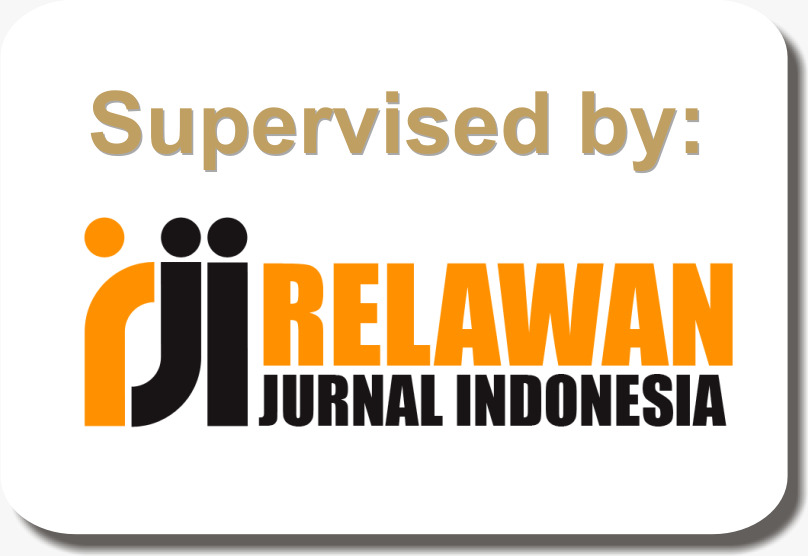Analisis Potensi Panas Bumi sebagai Sumber Energi Listrik Alternatif di Kabupaten Sumbawa
DOI:
https://doi.org/10.30599/jti.v15i2.2415Keywords:
panas bumi, reservoir panas bumi, tipe air panas, energi listrik alternatifAbstract
Sumbawa memiliki potensi panas bumi yang belum dimanfaatkan, khususnya potensi sebagai energi listrik. Penelitian ini bertujuan untuk menganalisis potensi panas bumi di Sumbawa sebagai sumber energi listrik alternatif. Data yang diukur adalah data fisika air panas di 4 titik hotspring dan pengambilan sampel air untuk dianalisis kandungan kimianya untuk mendapatkan informasi mengenai tipe air panas, temperatur bawah permukaan, dan kedalaman reservoir. Hasil yang diperoleh adalah tipe air panasnya adalah air klorida, mengindikasikan bahwa air panas tersebut berasal dari aktivitas vulkanik atau tektonik dan indikator bahwasanya sistem panas bumi sangat baik dikembangkan sebagai energi listrik. Demikian juga suhu bawah permukaan air panas adalah termasuk temperatur sedang (210°C) dan tinggi (259°C), artinya sangat cocok menjadi sumber energi. Kedalaman reservoir sekitar 5 - 7 km, merupakan kedalaman reservoir yang baik untuk energi listrik. Kesimpulannya adalah bahwa panas bumi di Kabupaten Sumbawa memiliki potensi yang sangat baik dan cocok untuk dikembangkan menjadi sumber energi listrik alternatif. Namun, pengembangannya membutuhkan biaya yang sangat besar dan dukungan teknologi yang sangat canggih untuk mengektraksi air panas dari reservoir. Sehingga perlu dilakukan penelitian lanjut untuk mengestimasi daya listrik, durabilitas, feasibilitas, dan dampak lingkungan.
Downloads
References
Asadi, M., Xie, G., Sunden, B. (2014). A review of heat transfer and pressure drop characteristics of single and two-phase microchannels. International Journal of Heat and Mass Transfer, 79, 34-53.
DiPippo, R. (2012). Geothermal power plants: Principles, applications, case studies and environmental impact. Elsevier.
Eliasson, ET. (2004). Power generation from high-enthalpy geothermal resources. GHC Bulletin, 26-34.
Fridleifsson, I. B., Bertani, R., Huenges, E., Lund, J. W., Ragnarsson, A., & Rybach, L. (2008). The possible role and contribution of geothermal energy to the mitigation of climate change. IPCC Scoping Meeting on Renewable Energy Sources, Proceedings, Luebeck, Germany, 20-25 January 2008, 59-80
Grant, M. A. & Bixley, P.F. (2011). Geothermal reservoir engineering. Academic Press.
Huenges, E. (2010). Geothermal energy systems: Exploration, development, and utilization. John Wiley & Sons.
Kristmannsdottir, H. & Armannsson, H. (2003). Environmental aspects of geothermal energy utilization. Geothermics, 32 (4-6), 451-461.
Limberger, J., Boxxem, T., Pluymaekers, M., Bruhn, D., Manzella, A., Calcagno, P., Beekman, F., Cloetingh, S., & Wees, J.D. (2018). Geothermal energy in deep aquifers: A global assessment of the resource base for direct heat utilization. Renewable and Sustainable Energy Reviews, 82, 961-975.
Lund, J. W. & Boyd, T. L. (2016). Direct utilization of geothermal energy 2015 worldwide review. Geothermics, 60, 66-93.
Moeck, I. S. (2014). Catalog of geothermal play types based on geologic controls. Renewable and Sustainable Energy Reviews, 37, 867-882.
Reed, M., & Spycher, N. (1984). Calculation of pH and mineral equilibria in hydrothermal waters with application to geothermometry and studies of boiling and dilution. Geochimica et Cosmochimica Acta, 48 (7), 1479-1492.
Shahnia, F., Majumder, R.,Ghosh, A., Ledwich, G., & Zare, F. (2010). Operation and control of a hybrid microgrid containing unbalanced and nonlinear loads. Electric Power System Research, 80 (8), 954-965.
Shortall, R., Davidsdottir, B., & Axelsson, G. (2015). Geothermal energy for sustainable development: A review of sustainability impacts and assessment frameworks. Renewable and Sustainable Energy Reviews, 44, 391-406.
Tassi, F., Aguilera, F., Darrah, T., Vaselli, O., Capaccioni, B., Poredo, R.J., & Huertas, A.D. (2010). Fluid geochemistry of hydrothermal systems in the Arica-Parinacota, Tarapacá and Antofagasta regions (northern Chile). Journal of Volcanology and Geothermal Research, 192 (1-2), 1-15.
Ussher, G., Harvey, C., Johnstone, R., & Anderson, E. (2000). Understanding the resistivities observed in geothermal systems. Proceedings World Geothermal Congress,1915-1920.
Weber,J., Ganz, B., Sanner, B., & Moeck, I. (2016). Geothermal energy use, country update for Germany. Proceedings European Geothermal Congress, 19-24 September.
Zarrouk, S. J., & Moon, H. (2014). Efficiency of geothermal power plants: A worldwide review. Geothermics, 51, 142-153.
Downloads
Published
How to Cite
Issue
Section
License
Copyright (c) 2023 Romi Aprianto, Indah Dwi Lestari, Adnan, Permata Ayu Dwi Puspitasari

This work is licensed under a Creative Commons Attribution 4.0 International License.








